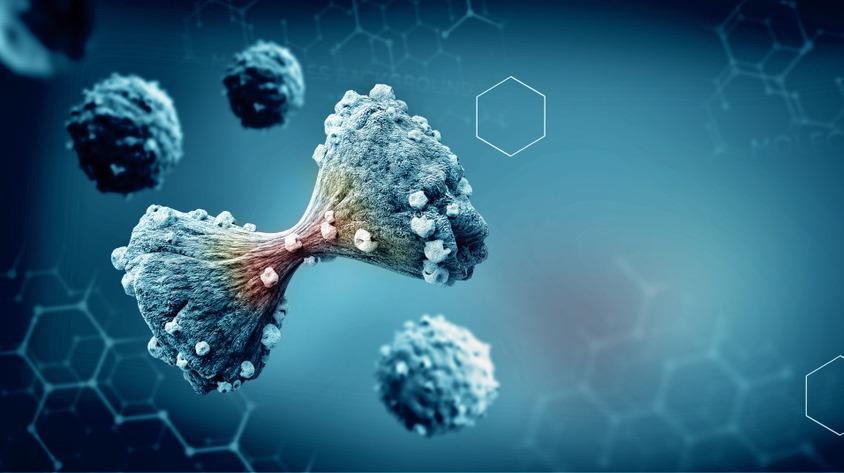Increased incidence of multiple drug resistance has become a significant obstacle to successful cancer treatment. However, advancements in nanomedicine have provided an innovative approach to overcoming this challenge. Novel research published in the journal ACS Molecular Pharmaceutics has combined chemotherapy with photothermal therapy with the help of nanomedicine.

Study: Subcellular-Targeted Near-Infrared-Responsive Nanomedicine with Synergistic Chemo-photothermal Therapy against Multidrug Resistant Cancer. Image Credit: Giovanni Cancemi/Shutterstock.com
What is Multidrug Resistance?
Multidrug resistance can be seen in some patients that exhibit cells that have gained natural resistance against drug treatments. This emerging crisis has been seen globally and while this can be a natural phenomenon, the ubiquitous use of antibiotics and drugs, in general, have furthered this occurrence.
Additionally, patients who exhibit malignant cells can also develop resistance to single cytotoxic compounds and are resistant to certain chemotherapy drugs. This can be a very significant issue for cancer therapeutics and furthers the challenge in treating cancer.
Chemotherapeutics are typically an effective method of treating metastatic tumors, however with multidrug resistance, cancer cells can become resistant to various drugs simultaneously which can result in ineffective treatment and lead to possible progression of the disease.
The mechanisms that outline multidrug resistance in cancer cells can be classed into two categories, including resistance due to impaired delivery of the drug to the cancer cell, as well as resistance that grows within the cancer cell as a result of genomic alterations.
Multidrug resistance is predominantly caused through the upregulation of a glycoprotein, known as, P-glycoprotein, as well as efflux pumps found on the cell membrane of cancer cells – these can transport drugs out of the cytoplasm, leading to a decreased concentration of intracellular drugs.
Cancer Nanomedicine
The advancement in nanotechnology has led to cancer nanomedicine, which aids in the development of cancer therapeutics with the use of nanotechnology. Nanoparticles can be used to conjugate with drug molecules in order to prevent the efflux of drugs out of the cytoplasm of multidrug-resistant cells, however, as many chemotherapy drugs are substrates for P-glycoproteins, this nanomedicine approach alone may not be as effective to reduce resistance in cancer cells.
Novel cancer nanomedicine research has produced a potential solution to multidrug resistance through the combination of chemotherapy and photothermal therapy. The use of photothermal therapy as an innovative strategy against multidrug resistance may be promising due to its beneficial effects such as lacking invasiveness, increased targetability and accumulation in tumor sites.
A group of researchers from Southwest Petroleum University, China, have undertaken novel research developing a photothermal agent consisting of sub-cellular-targeted near-infrared (NIR)-responsive nanomedicine.
The team utilized a drug delivery system consisting of iron oxide (Fe3O4), as a magnetic nanocarrier with polydopamine being used to alter this carrier for use as a photothermal agent (Fe3O4@PDA). The surface of this photothermal agent was modified with targeting groups such as triphenylphosphine (TPP), which was used as a mitochondria targeting group. PEG segments were also included with the chemotherapy drug, Doxorubicin – this resulted in an ultimate combination of chemotherapy and photothermal therapy, Fe3O4-ATSPD.
This advanced drug delivery system has the ability to accumulate within cancerous tissue, which relies on the enhanced permeability and retention effect (EPR) as well as magnetic targeting to deliver the chemotherapy drug into the tumor cells after entry.
The use of near-infrared responsive irradiation enabled the treatment of multidrug-resistant breast cancer cells through rapid heat generation. This can lead to the permeability of the mitochondria, an organelle that is sensitive to hyperthermia or overheating, and ultimately result in programmed cell death.
Significance and Future Outlook
This advanced cancer therapeutic research holds great potential for targeting multidrug-resistant cells through a combination of chemotherapy and photothermal therapy. This research can address the challenge of drugs that are transported out of cancer cells through efflux pumps due to their resistance mechanisms, to be overcome.
The novel use of nanotechnology may revolutionize the field of cancer research and with further research can be used within a clinical setting and advance precision medicine, with targeted as well as a more effective treatment.
This research ensures cancers with high mortality rates including breast cancer, which is the most common malignant cancer found in women, are provided with advanced treatment. Reducing mortality rates through innovative research is an aim for cancer therapeutics, and with breast cancer being the second leading cause of death for women, novel treatments in this area are necessary.
The utilization of chemotherapy after surgical resection is significant for cancer treatment and multidrug resistance has decreased the efficacy of chemotherapy. The use of this research, however, enables the future of cancer therapeutics and cancer nanomedicine to expand to overcome barriers such as resistance, which ultimately can reduce mortality rates and increase the quality of treatment for patients.
Reference
Tang, Z., Tian, W., Long, H., Jiang, S., Zhao, J., Zhou, J., He, Q. and Luo, X., (2022) Subcellular-Targeted Near-Infrared-Responsive Nanomedicine with Synergistic Chemo-photothermal Therapy against Multidrug Resistant Cancer. Molecular Pharmaceutics,. Available at: https://pubs.acs.org/doi/10.1021/acs.molpharmaceut.1c00998
Further Reading
Gottesman, M., Fojo, T. and Bates, S., (2002) Multidrug resistance in cancer: role of ATP–dependent transporters. Nature Reviews Cancer, 2(1), pp.48-58. Available at: https://doi.org/10.1038/nrc706
Tanwar J, Das S, Fatima Z, Hameed S. (2014) Multidrug resistance: an emerging crisis. Interdisciplinary perspectives on infectious diseases. 2014;2014:541340. https://doi.org/10.1155/2014/541340.
TheFreeDictionary.com. (2022). Multi drug resistance. [online]
Disclaimer: The views expressed here are those of the author expressed in their private capacity and do not necessarily represent the views of AZoM.com Limited T/A AZoNetwork the owner and operator of this website. This disclaimer forms part of the Terms and conditions of use of this website.